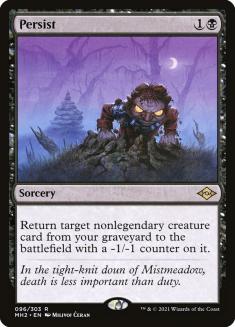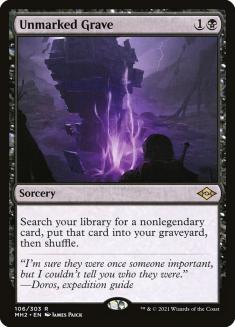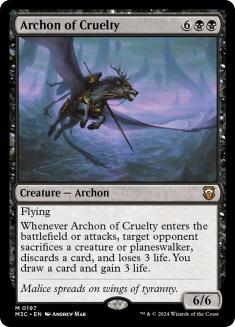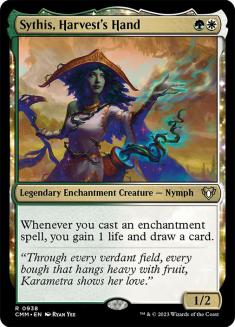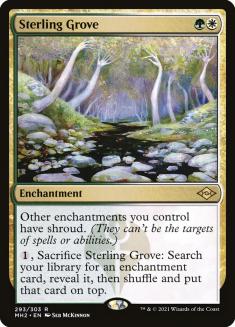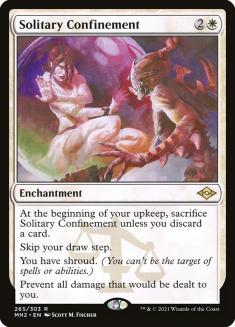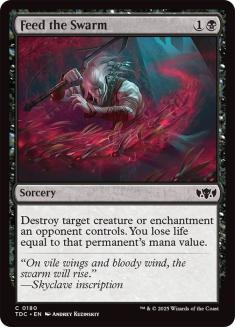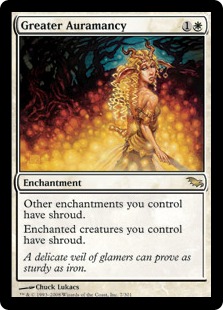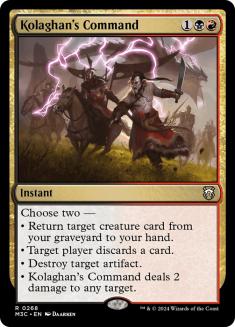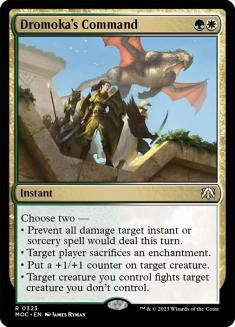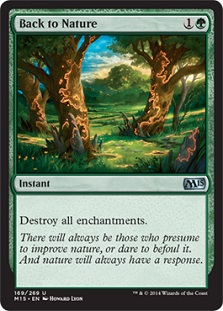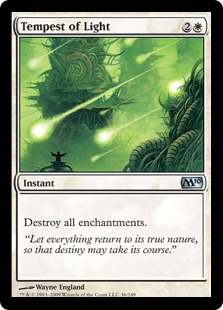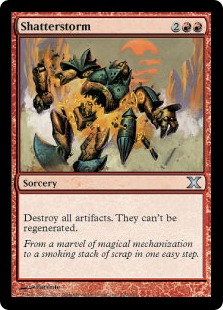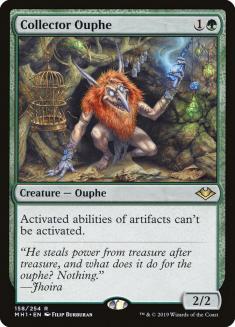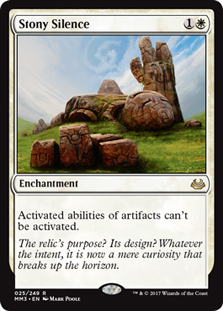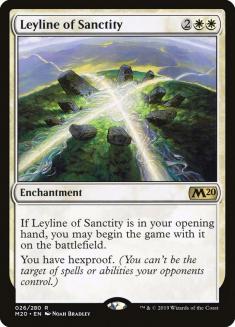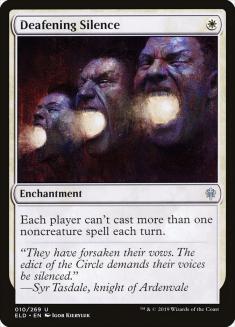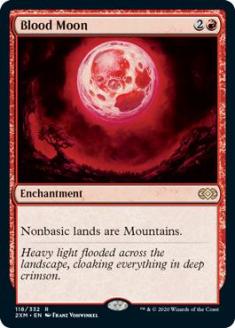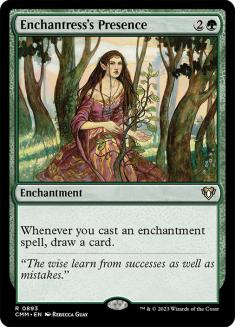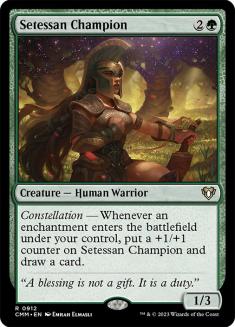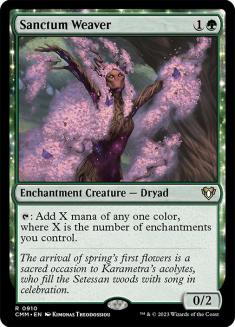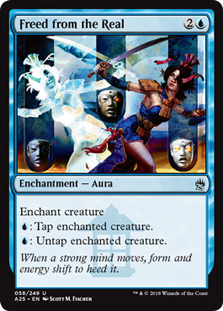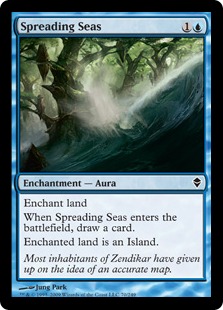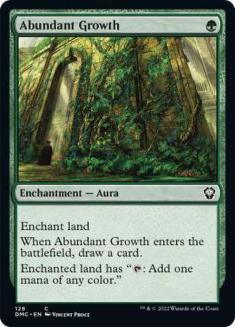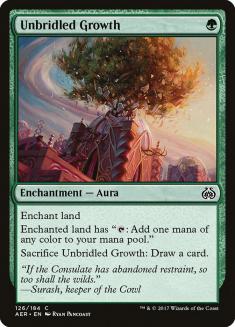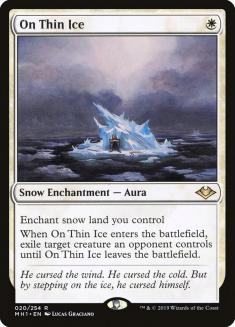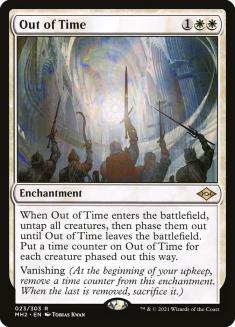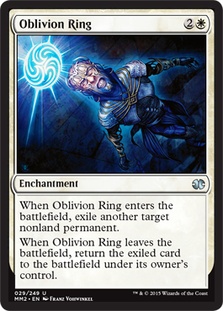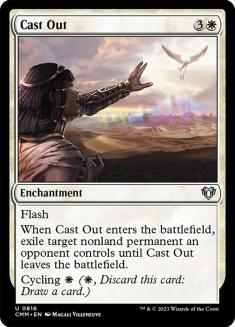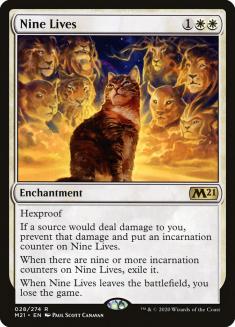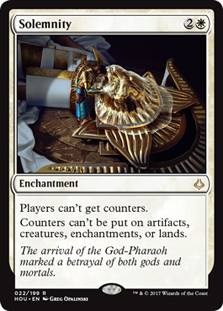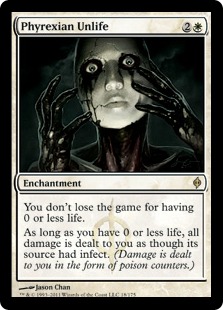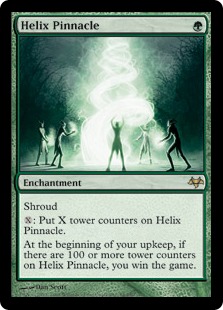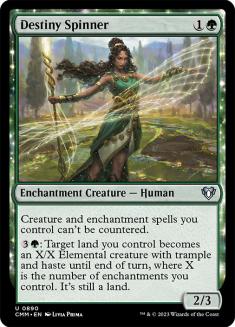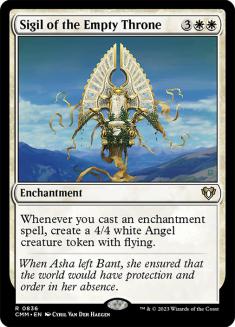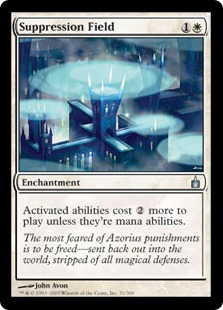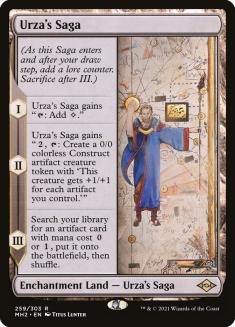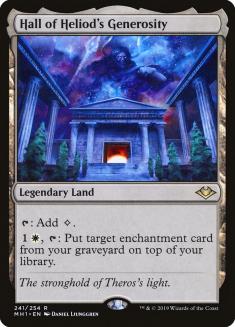Modern Horizons 2 introduced some names that already inspire fear. Urza’s Saga. Ragavan. Asmoranomardicadaistinaculdicar (that one just rolls off the tongue).
The set also made a conscious effort to bring back some names we haven’t heard in a while. Enchantress is a classic archetype beloved by a large segment of experienced players but hasn’t been seen even on the fringes of Modern in almost a decade.
A curious aspect of this comeback tour is that these promoted archetypes weren’t junior-division hopefuls aiming for something higher; they have never played the game in Modern before. Reanimator didn’t just gain the best reanimation spell but the best graveyard enabler and the most reliable reanimation targets.
Similarly, Enchantress feels more like a Modern Horizons 2 Block Constructed deck than an accidental, organic mixture of the best enchantments and enablers across eighteen years. This can make it hard to gauge whether the individual components are good enough and exactly what was or is holding it back. It’s also an exciting opportunity to do a deep dive into the Modern card pool to unearth gems we had no reason to look for until now.
The main strategic reason to play Enchantress is that it exploits long-standing issues in the colour pie as well as some reliable tactics from Modern’s past:
Black and red are so poor at removing enchantments that the printing of Feed the Swarm was somehow a momentous event for black that red had to be jealous of. Colourless options like Ratchet Bomb or Engineered Explosives are so inefficient that the faster decks based in these colours may as well not bother. Many lists of Izzet Prowess or Rakdos Death’s Shadow (Lurrus) are effectively unable to deal with a resolved enchantment (prompting some Death’s Shadow lists to splash white just for Prismatic Ending, not because of enchantments specifically but as a nod to the wide range of nonsense you have to be prepared for in Modern).
Other decks in more prepared colours have at most a handful of removal spells that can hit enchantments and the goal of Enchantress should be to force the opponent to find enough of these in a short window. Even if they do, these card-for-card exchanges are a losing battle against a deck that has more copies of its key enchantments, draws cards when it casts them, and can protect them with Greater Auramancy or Sterling Grove. Grove is especially potent here as an outgoing Grove can find another copy of itself or the at-risk enchantment if you have the time and mana to spare.
The incidental artifact or enchantment hate that shows up in Modern is heavily slanted towards artifacts. Kolaghan’s Command and Prismari Command are much stronger than Dromoka’s Command these days. Enchantress demands specific answers that are in short supply.
Other than brief periods where Selesnya Hexproof stole the spotlight, heavy-duty enchantment hate is much more difficult to justify than cards like Stony Silence that are omnipresent in decks that can support them (including Enchantress!).
For many years the best reason to play white in Modern was access to absurdly powerful sideboard enchantments that could singlehandedly invalidate entire strategies. Enchantress is not only immune to these and therefore able to enjoy them itself, it can find them directly and protect them in games where they are all that matters.
Blood Moon is a familiar kryptonite for vast swathes of the Modern format but shores up some glaring weaknesses for Enchantress in big mana strategies (especially Amulet Titan, one of the best performers in these early results) and decks like Five-Colour Niv-Mizzet or Bring to Light as well as various control decks whose flexible, multicoloured removal lets them deal with enchantments as a happy accident.
It’s also excellent in the format at large right now. Urza’s Saga is the biggest reason for an uptick in enchantment removal elsewhere but also a great reason to play Blood Moon (a rules quirk of Sagas means that Urza’s Saga will be sacrificed instantly under Blood Moon regardless of when it’s played). The aggressive and midrange decks that were natural homes for Blood Moon have mostly vanished, encouraging the rest of the format to take more liberties with their mana.
Blood Moon places more demands on you than these other cards and is the sole reason to be in Naya rather than straight Selesnya. Splashing for Blood Moon may seem counter-intuitive but it’s a testament to the card’s power.
The play patterns that make Solitary Confinement a puzzling inclusion in Modern Horizons 2 make it a strong incentive to play this deck; it either does virtually nothing or threatens to end the game by itself. Its gameplay is more dynamic here as you have to sustain it manually by netting cards from your Enchantress effects rather than pitching the same Genesis or Squee, Goblin Nabob every turn and attacking these engines (especially the creatures like Sythis, Harvest’s Hand) can allow the opponent to break the Confinement lock.
This also makes the lock stronger in one sense. If you were just recycling Squee every turn and freezing your own participation in the game, a single piece of removal for Confinement anywhere in the opponent’s deck renders it pointless. The Enchantress engine lets you develop your own gameplan while neutering theirs, working towards an end state where you have more layers of protection for Confinement than they have removal (the easiest lock being two copies of Sterling Grove and/or Greater Auramancy protecting each other and thereby everything else) or can finish the game with one of your few win conditions before they see much more of their deck.
This strong positioning and access to superweapons won’t amount to much if the infrastructure of the deck is weak. Let’s see how some lists have tried to tie the room together:
Creatures (12)
Lands (20)
Spells (28)
- 4 Sterling Grove
- 4 Solitary Confinement
- 4 Enchantress's Presence
- 4 Utopia Sprawl
- 4 Greater Auramancy
- 1 Helix Pinnacle
- 4 Abundant Growth
- 3 Unbridled Growth
Sideboard

Creatures (8)
Lands (22)
Spells (30)
- 4 Fertile Ground
- 3 Sterling Grove
- 2 Solitary Confinement
- 4 Enchantress's Presence
- 2 Suppression Field
- 4 Utopia Sprawl
- 2 Sigil of the Empty Throne
- 2 Phyrexian Unlife
- 3 Cast Out
- 2 Solemnity
- 2 Out of Time
Sideboard

Creatures (11)
Lands (20)
Spells (29)
- 4 Sterling Grove
- 3 Enchantress's Presence
- 1 Blood Moon
- 4 Utopia Sprawl
- 1 Wheel of Sun and Moon
- 1 Sigil of the Empty Throne
- 4 Phyrexian Unlife
- 1 Cast Out
- 4 Solemnity
- 4 On Thin Ice
- 2 Nine Lives
Sideboard

Creatures (18)
- 4 Arbor Elf
- 1 Nylea, God of the Hunt
- 1 Hydroid Krasis
- 4 Destiny Spinner
- 4 Sanctum Weaver
- 4 Sythis, Harvest's Hand
Lands (21)
Spells (21)
- 2 Fertile Ground
- 1 Sterling Grove
- 4 Enchantress's Presence
- 3 Freed from the Real
- 4 Utopia Sprawl
- 2 Oblivion Ring
- 1 Finale of Devastation
- 4 On Thin Ice
Sideboard

Old-school staple Enchantress’s Presence joins flashy new model Sythis, Harvest’s Hand as the cards that make this deck’s engine run. Sythis has a lot of upsides over Argothian Enchantress but you’d gladly trade them all for shroud or another form of protection — one of your few Enchantress effects being this vulnerable makes the deck much easier to attack. Since you can’t avoid this altogether, overloading their removal is a fine alternative; the first Sythis may die on sight, but it clears the way for a Sanctum Weaver or Setessan Champion.
For this reason, four copies of Enchantress’s Presence are absolutely mandatory and shaving a copy is unnecessarily greedy. Most of your cards are either below-rate or uninspiring in the broader context of Modern but become exceptional when they draw a card or confer some other benefit. Having a high density of cheap enchantments lets you tear through your deck when your engine is firing on all cylinders but crucially makes it easier to get an immediate return on Sythis when you know it’s on borrowed time.
Sterling Grove is a crucial piece of this puzzle, finding and protecting your high-impact enchantments or grabbing the Enchantress effect you need to get this engine going. Grove requires the most careful planning of any card in the deck — finding and casting something in the same turn may require holding a cheap enchantment for Sythis / Presence or something like Abundant Growth that can ‘cycle’ itself on a previous turn rather than efficiently maximizing your mana usage.
Greater Auramancy asks how useful this protection is by itself. If one of the main incentives to pay Enchantress is that few people are prepared to handle enchantments, maindeck Greater Auramancy seems like a concession that this no longer applies (but becomes even more important in that context!). Shielding Sythis or Sanctum Weaver from Fatal Push may be reason enough to run some copies of Greater Auramancy and having these in the maindeck frees up sideboard slots for more specific purposes.
Sanctum Weaver is the Baral, Chief of Compliance or Sakura-Tribe Scout of Enchantress, promising explosive turns by lifting the cap on mana generation at the cost of increased exposure to removal. The deck is surprisingly short on mana sinks, preferring to spend its mana chaining spells together, so Weaver is not an incentive to keep hands without an Enchantress effect.
Some lists use Freed from the Real to generate infinite mana with Sanctum Weaver but this lack of natural mana sinks makes this effectively a three-card combo and untapping with Sanctum Weaver is easier said than done, stranding Freed from the Real in your hand far too often.
If you can’t commit to Blood Moon, Spreading Seas has a higher floor as a cheap enchantment that replaces itself while still taking down Urza’s Saga and punishing ambitious manabases. Notably, Spreading Seas is much stronger against the heavy red decks like Gruul Land Destruction or Rakdos Death’s Shadow (Lurrus) with demanding coloured mana requirements.
Abundant Growth ticks every box: a cheap, cantripping enchantment that even sets you up perfectly for Blood Moon. This effect isn’t flashy but it’s important enough as glue for this strategy that I like bennybo’s use of Unbridled Growth as additional copies.
With this focus on efficiency in mind, it’s hard to do better than On Thin Ice for removal. A deck that takes the first few turns off for setup needs ways to regain that time (or, dare I say, tempo?!) and On Thin Ice is often a card you want to see repeatedly and urgently. It places some strain on the manabase but this is more than worth it and I would certainly play four.
Out of Time is a powerful effect with no obvious home; the creature-light decks that could support this would mostly rather have a permanent answer. Enchantress is fine with its sweeper just being a delaying tactic and allowing Sterling Grove to find a sweeper makes you much harder to play against.
You don’t want too much versatile-but-expensive removal as you usually only care about a narrow range of cards and want to keep your curve low but the first copy is important again for Sterling Grove.
Solemnity works with Nine Lives or Phyrexian Unlife to lock out anyone hoping to win via combat while incidentally shutting down decks like Infect or Hardened Scales by itself. Phyrexian Unlife is the stronger partner as it doesn’t increase your weakness to mass enchantment removal or sweepers (such as Engineered Explosives, which Solemnity conveniently stops too) and it shields you from non-damage sources of life loss (the most common being Cauldron Familiar loops from the Food decks).
The Nine Lives / Phyrexian Unlife half of the combo is another fine defensive measure on its own, but I think you need to fully commit to this plan if you want to play it at all and it occupies the same role with Solitary Confinement while taking up a lot more space.
You need some way to formally end the game without wasting too many slots on otherwise poor cards. Destiny Spinner is by far the best option, offering a unique form of protection and letting you compete in scrappy games when your engine is offline.
Suppression Field is an explicit hoser for some decks (Food and Hardened Scales immediately come to mind) but has strong Leonin Arbiter upside against Modern manabases that rely heavily on fetchlands. You need a certain amount of fetchlands yourself to support Blood Moon but if you want to stay in Selesnya or think you can get away with it anyway, Suppression Field is well worth the sacrifice.
It can feel like every other deck in Modern is trying to take advantage of Urza’s Saga but Enchantress is the only one that might benefit from it being an enchantment. Unfortunately Sythis and Enchantress’s Presence only look for enchantments being cast, restricting that benefit to the tertiary options like Setessan Champion or Eidolon of Blossoms, and there are no artifacts to fetch that have a clear tie-in to your gameplan. You aim to use all your mana every turn and losing a permanent mana source in the mid-game can be disastrous.
There’s also a severe cost to a colourless land in this deck, explaining the general absence of a card that looks like a shoe-in:
It’s tough to add more here than just reciting the text on the card, but Hall of Heliod’s Generosity has a subtle but valuable use case of looping Solitary Confinement: you sacrifice it rather than discarding a card, unlocking your draw step, and return it with Hall so that you can draw and recast it to stay under Confinement during the opponent’s turn without a net loss of cards.
Enchantress went from lacking all of its core components to having so many options for each of those roles that it has to make tough choices. The tools are there now for it to succeed (and for opponents to fight back if they choose to care).


